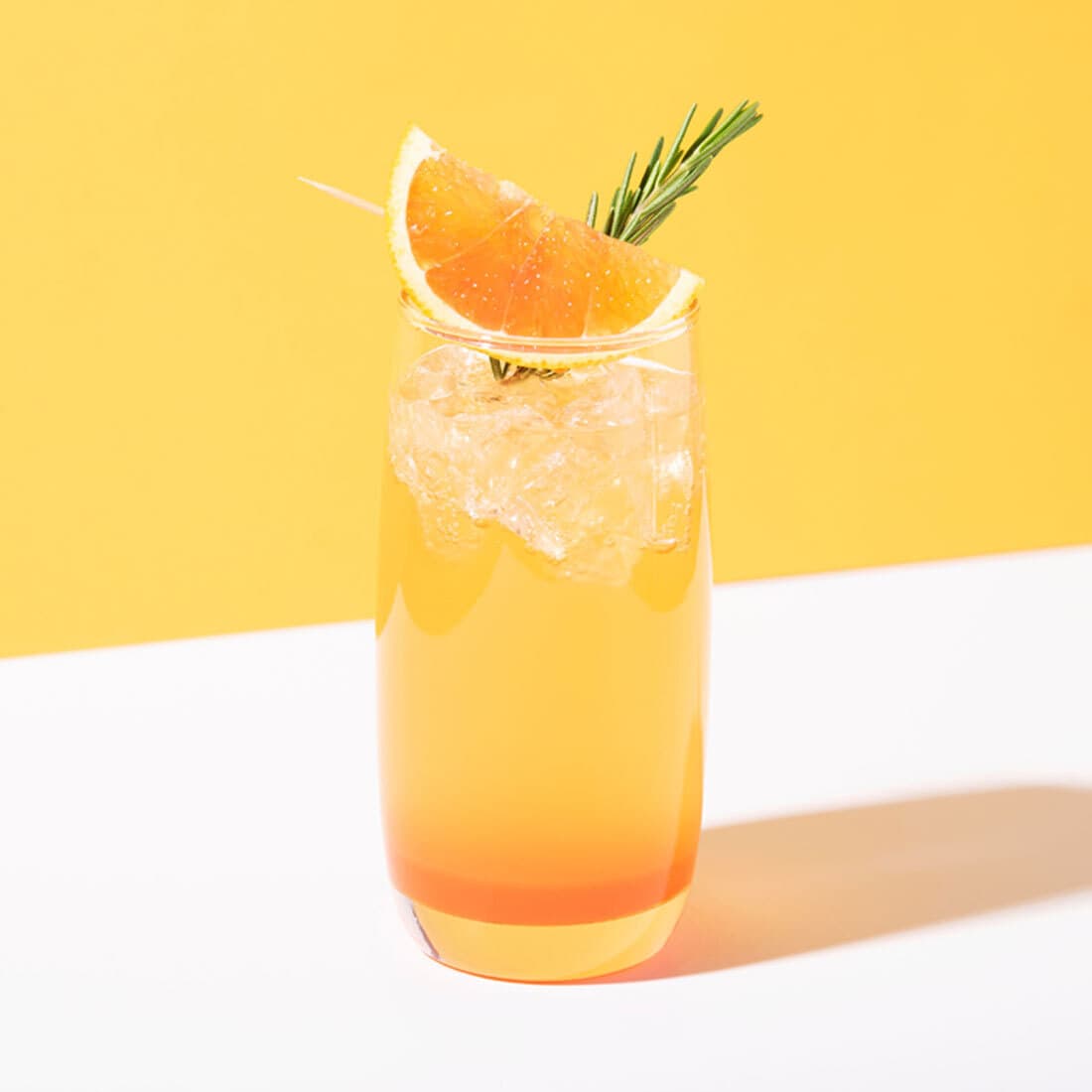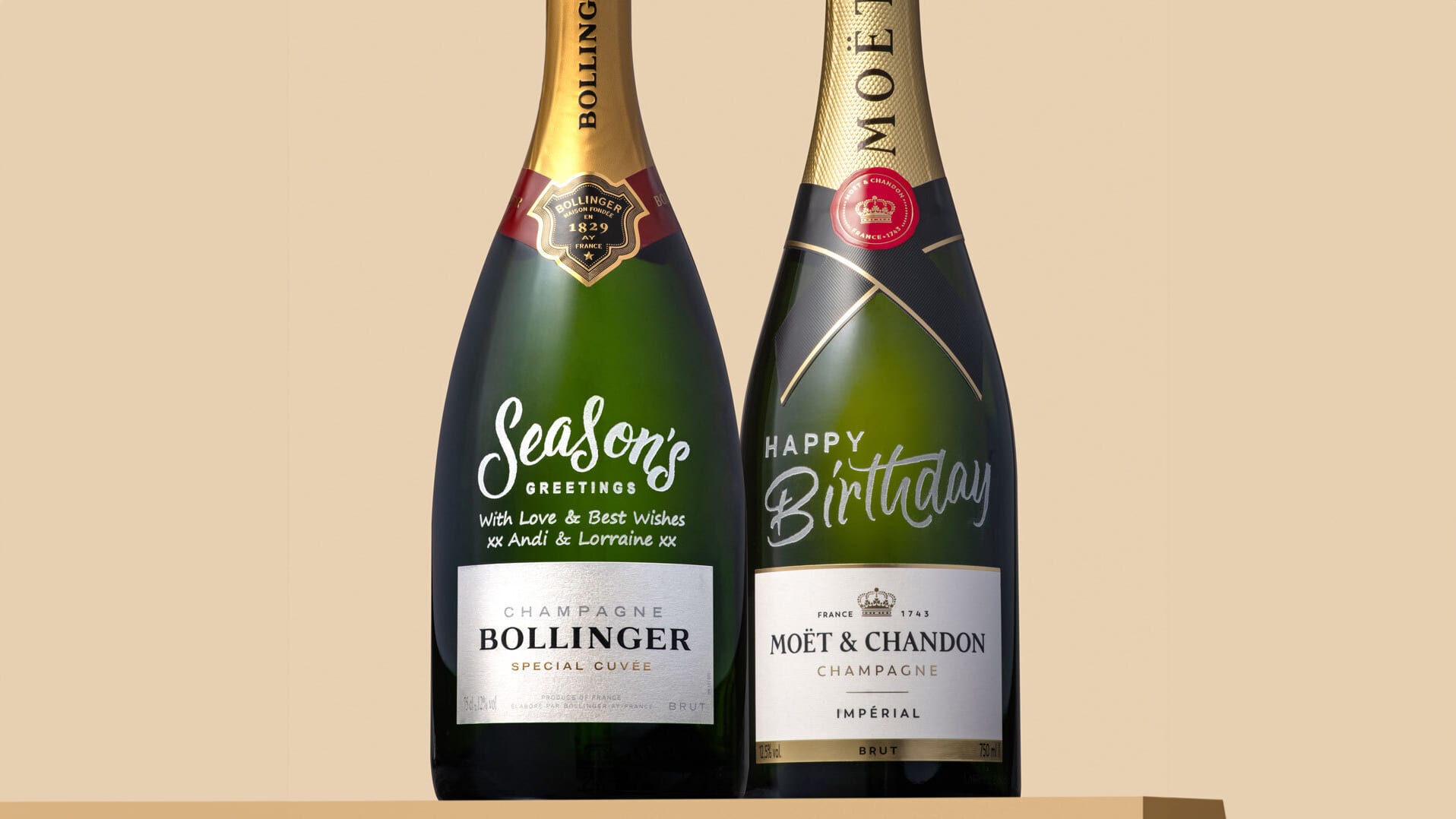
We’ve got to ask
Please confirm you’re above to legal drinking age in your country.
The History of Champagne and Personalisation

Originating from the exclusive Champagne region of France, champagne has evolved from a simple vineyard product into a global symbol of luxury. This luxury beverage, known for its distinctive bubbles and refined taste, has become the go-to choice for personalised gifts that celebrate significant occasions worldwide. With its rich heritage and exclusive production, champagne is synonymous with celebration and exclusivity, making it a preferred option among celebrities, for creating memorable, tailored gifts, and to mark milestones like anniversaries, weddings, and baby showers.
From Vineyard to Personalised Gift
Champagne's journey from the vineyards of France's renowned Champagne region to becoming a central figure in personalised luxury gifts is a story of evolution and innovation. Initially, this region's unique climate and geographical features, coupled with the historical use of robust English glass and Portuguese cork, facilitated the development of this exclusive sparkling wine.
Dom Perignon's Contributions
Dom Perignon, often celebrated for his pivotal role, significantly advanced champagne's reputation by embracing its naturally effervescent quality. His methods in the Abbey of Hautvillers led to the refinement of the fermentation processes that are the hallmark of champagne production today.
Current Production and Regulations
Today, the Champagne region produces approximately 350 million bottles annually. This massive output is regulated under stringent laws that ensure each bottle's quality and authenticity, preserving champagne's legacy as a premium product.
The production of champagne is regulated by a set of strict laws and regulations to ensure the quality and authenticity of the product. These regulations are primarily established and enforced by the Comité Champagne (CIVC - Comité Interprofessionnel du vin de Champagne) and French and European laws. The key regulations include:
French Laws and Appellation d'Origine Contrôlée (AOC)
Appellation d'Origine Contrôlée (AOC): The AOC system in France designates specific geographical areas and sets stringent production standards for wines produced within these areas. For champagne, the AOC designation means that only sparkling wines produced in the Champagne region using defined methods can be labelled as champagne.
Décret de l’AOC: This decree outlines the specific requirements for champagne production, including grape varieties, vineyard practices, harvesting methods, winemaking processes, and ageing requirements.
European Union Regulations
Protected Designation of Origin (PDO): The PDO status for champagne is recognised by the European Union, ensuring that the name "champagne" can only be used for sparkling wines produced in the Champagne region under specified conditions.
Regulation (EU) No 1308/2013: This regulation establishes the common organisation of the markets in agricultural products, including wine. It includes provisions for quality policy, labelling, and marketing standards.
Evolving Personalisation Trends
In recent years, personalisation has become a significant trend in champagne gifting. Techniques range from custom labels and engraving to the addition of glitter decorations, each adding a unique touch to the celebratory bottles. Prestige Drinks, for example, leverages advanced laser engraving technology to offer personalised messages and images on champagne bottles, enhancing the gift-giving experience.
Significance in Gift-Giving
Champagne is a popular choice for marking special occasions such as weddings, anniversaries, and significant milestones. Its role as a personalised gift enhances these celebrations, making moments memorable with a customised luxury touch.
Are champagne bottles dated?
Champagne bottles are often dated, with the vintage year indicating when the grapes were harvested. This date is crucial as it helps connoisseurs determine the quality and value of the champagne, influencing its maturation and flavour profile.
Champagne is classified as vintage or non-vintage based on its production. Vintage champagne is made from grapes harvested in a single exceptional year, while non-vintage champagne blends grapes from multiple years, ensuring consistency in taste and quality.
What's the oldest champagne house to offer personalisation?
Ruinart, established in 1729, was one of the first houses to offer personalised labels on their bottles. Following them, Moet and Chandon began offering personalisation services in the 19th century, allowing patrons to customise their purchases for special occasions.
Today, virtually any bottle can be personalised, and Prestige Drinks offers engraving services for a wide range of major brands. Whether you prefer the elegance of Billecart-Salmon, the tradition of Bollinger, the luxury of Dom Pérignon, the sophistication of Lanson, or the prestige of Laurent-Perrier, you can have your bottle uniquely engraved. This service ensures your gift stands out and is cherished long after the last drop is enjoyed.
Steps in personalising a Champagne bottle
Select the champagne brand and vintage best suited for the occasion.
Choose the personalisation method—be it a label, engraving, or other decorative options.
Finalise the design and confirm the order to ensure your personalised message or image is perfectly captured.

Evolving Traditions
Champagne's cultural and historical evolution mirrors its shift in consumption patterns—from the initially preferred sweet variants to the now-dominant dry (brut) styles. This transition reflects broader changes in consumer tastes and the increasing preference for subtlety and complexity in flavour profiles.
Technological Advancements
Advancements in technology have significantly impacted champagne production, enhancing both quality and consistency. Modern viticulture and vinification techniques enable producers to maintain high standards, which is crucial for preserving the luxury status that champagne enjoys globally.
Global Perception and Market Trends
While cava, prosecco and other sparkling wines gain global traction due to their affordability and quality, champagne retains its position at the apex of luxury sparkling wines. Its image, protected by rigorous regulation and marketing, continues to symbolise celebration and prestige worldwide.
Legislative Milestones
Champagne's history is also shaped by critical legislative milestones that have defined the champagne appellation and production standards. These laws ensure that only wines produced within the designated region and adhering to strict guidelines can be labelled as champagne, safeguarding its heritage and quality.
UNESCO Recognition
In 2015, UNESCO recognised “Houses, Hillsides and Champagne Cellars” as World Heritage sites, emphasising the importance of preserving traditional practices and the landscape integral to champagne production. This honour spotlights the global value placed on maintaining the cultural and historical integrity of champagne-making regions.
Major historical developments of champagne:
Accidental discovery of sparkling wine due to the region's unique climatic conditions.
Early challenges with bottle explosions led to innovations in bottle strength.
The eventual royal endorsement elevated its status among the French nobility.
The establishment of renowned champagne houses solidified the drink's luxury image.
Significant historical figures and their contributions
Hugh Capet, who supported the vineyards in Champagne during his reign, enhanced their prestige.
Duke of Orléans, who promoted the consumption of sparkling wine among the aristocracy, increasing its popularity.
Christopher Merrett, an English scientist who first documented the method of adding sugars to create sparkling wine, a technique crucial to the development of champagne.

Champagne's Role in Celebrations
Champagne has long been intertwined with the cultural fabric of society, symbolising luxury, celebration, and prestige. Its association with royalty and high society dates back centuries, making it a staple at significant events and a marker of special occasions.
Cultural and Social Impact
The drink's image has been cultivated through its historical ties to French royalty and its prominent presence at global events, such as Wimbledon and the BAFTAs. This prestigious reputation makes champagne, not just a beverage but a cultural icon, celebrated and desired by many.
Event-Specific Personalisations
Personalised champagne has become increasingly popular for various events. Weddings and corporate gatherings often feature bottles tailored to the occasion, whether through custom labels or unique messages engraved directly onto the glass. This adds a touch of personalisation that enhances the event's significance.
You might make the gift-receiving experience even better by packaging your champagne in a luxury gift hamper along with some complementary treats.
Economic Implications
The luxury segment of champagne, with its elaborate personalisation options, significantly impacts pricing dynamics. Customisations such as engraving and special labels add value, making personalised champagne a premium product within the already upscale champagne market.
Sustainability in Champagne Production
In response to growing environmental concerns, trends towards sustainability in champagne production are emerging. Eco-friendly champagne personalisation options, such as biodegradable glitter and recyclable packaging, are becoming more prevalent, aligning luxury with responsibility.
Personalised Champagne Options
Type | Description | Typical Occasions |
Engraved Bottles | Custom messages or designs engraved | Weddings, Anniversaries |
Label Personalisation | Tailored labels with names or messages | Birthdays, Corporate Events |
Glittered Champagne | Bottles coated with edible glitter | Parties, Celebrations |
As it continues to mark milestones and special moments, personalised champagne remains a prestigious and thoughtful choice, embodying a blend of rich history and unique individuality. Discover the perfect champagne personalisation for your next special occasion. Explore our exclusive range of champagnes for personalisation and tailor your memorable gift, ensuring every celebration is as unique as the champagne itself.


